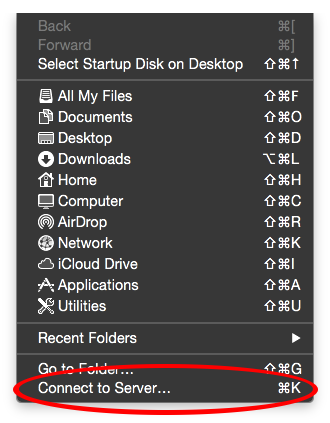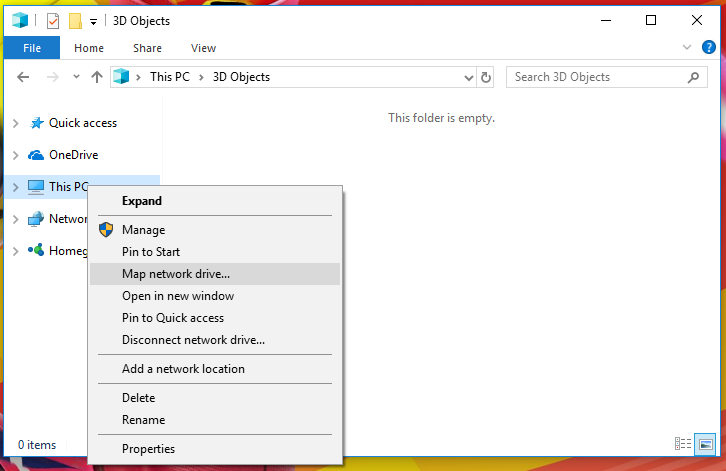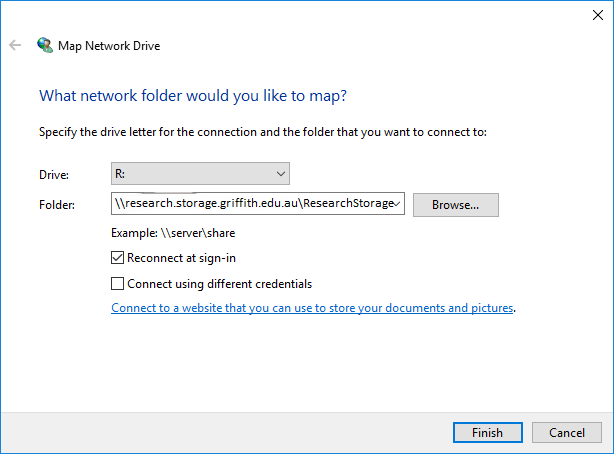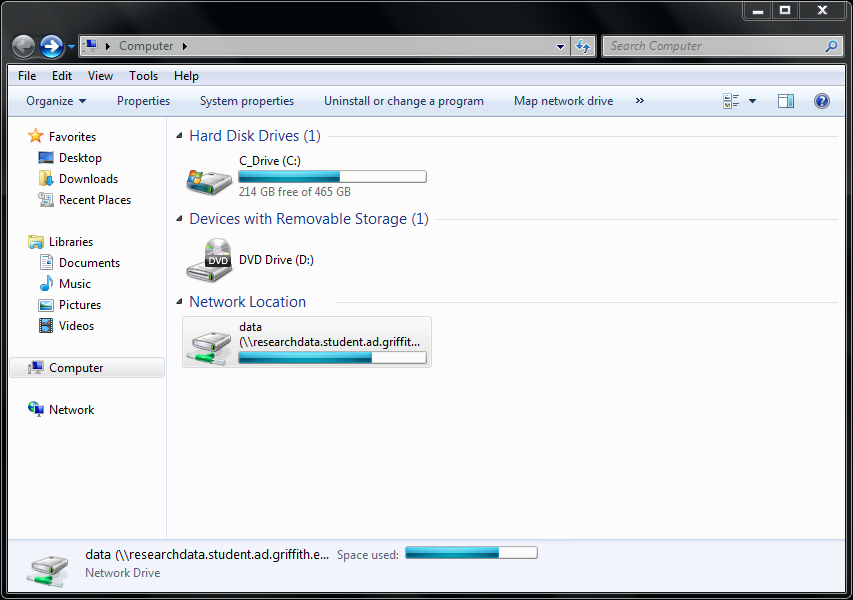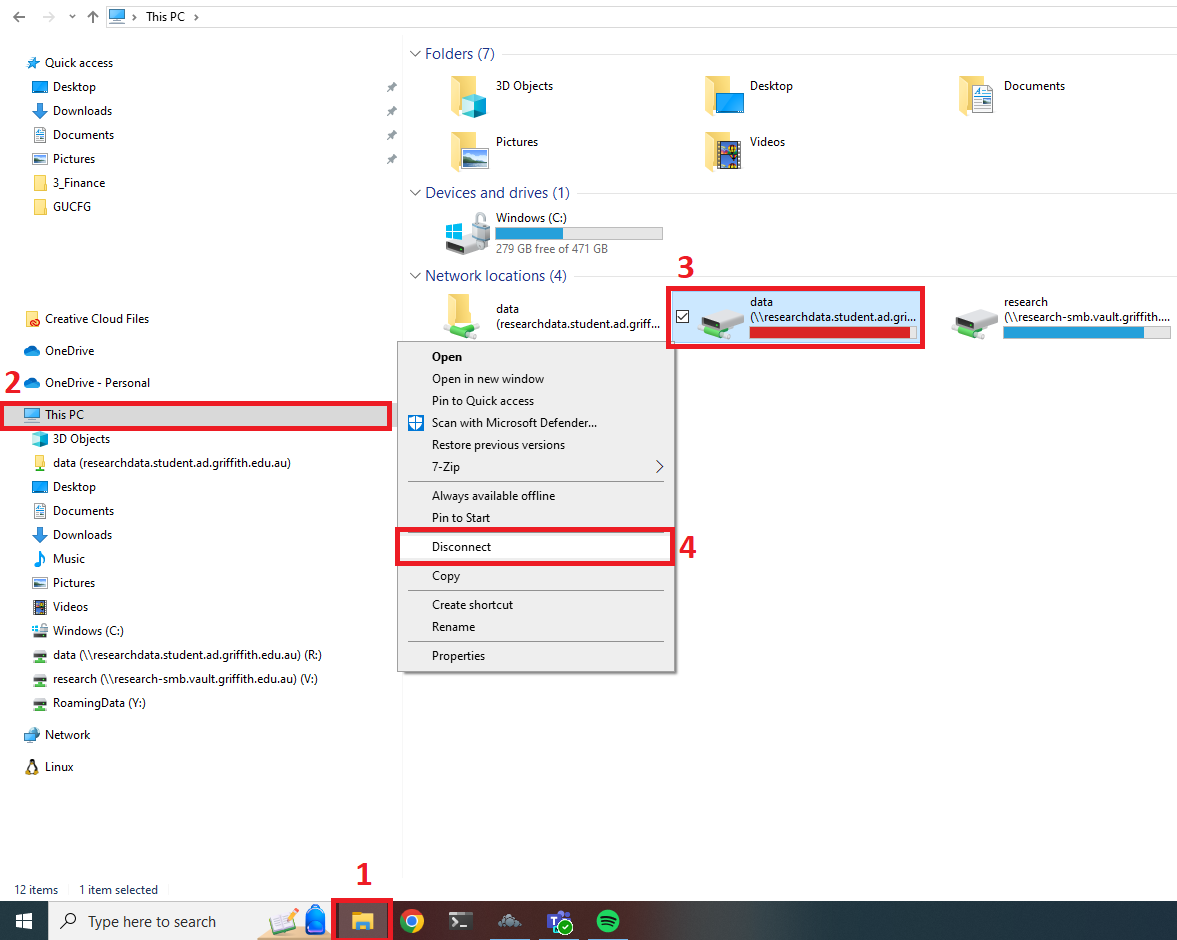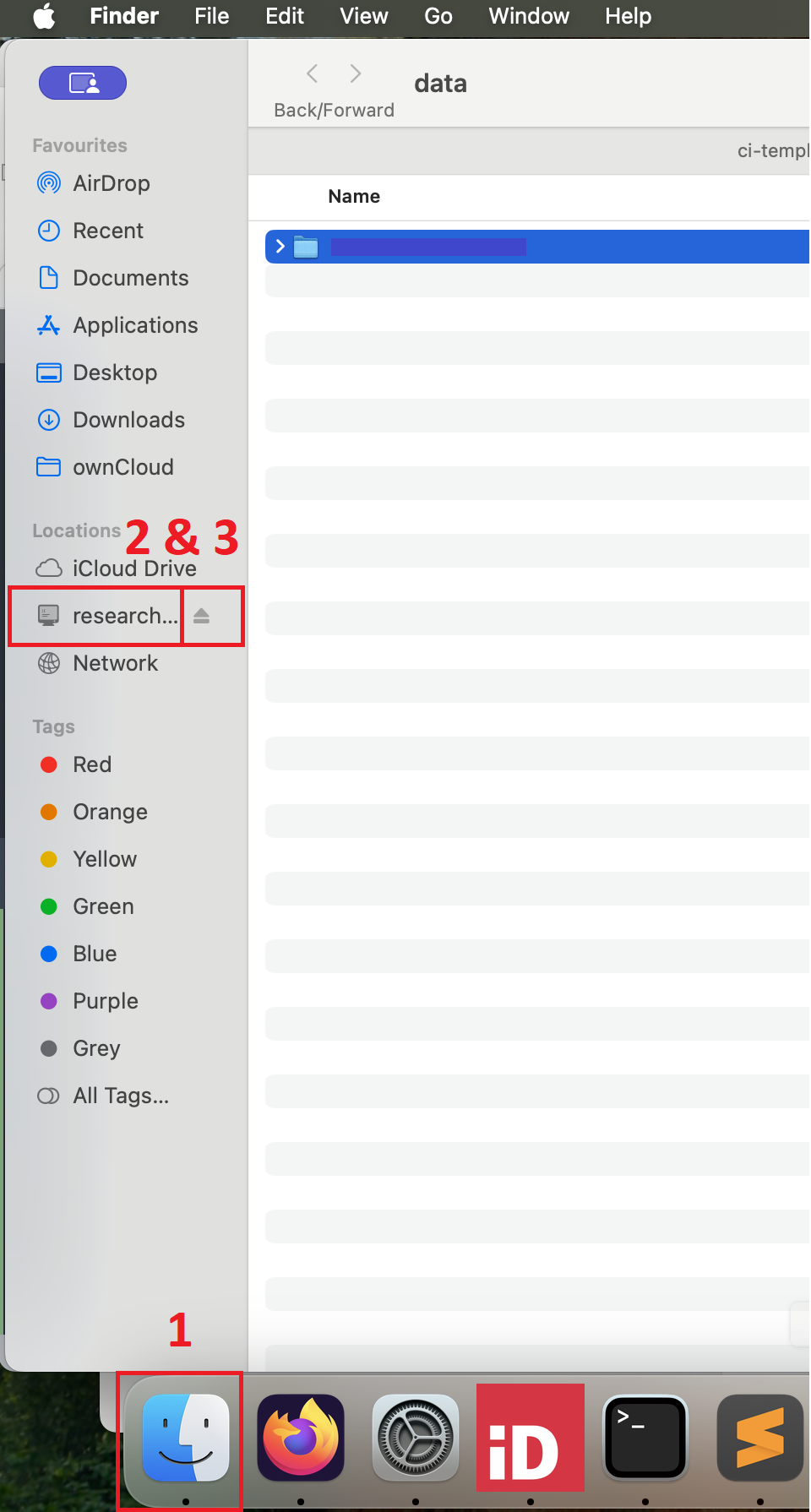Research Drive is a shared network storage system where you can securely store Griffith research-related large files or collections of data. Research project data on the Research Drive is stored in a central location on a server, making data backup and recovery easier and more reliable. Griffith researchers can request storage for individual research projects. Access to the Research Drive is available only through a Staff Computer Account. If you are a student without a Staff Computer Account, you will need to speak to your supervisor to arrange access.
To request a new Research Drive folder for your research project or to request access to an existing Research Drive folder, please complete the online form: Service Now Request Form
Follow the instructions below to find out how to connect using your device. Each device is slightly different.
Research drive network location:
Windows \\research.storage.griffith.edu.au\ResearchStorage
Username: sNumber@staff.ad.griffith.edu.au e.g replace sNumber with your own Griffith sNumber.
OSX and Linux smb://staff\sNumber@research.storage.griffith.edu.au/ResearchStorage
Username: replace the 'sNumber' in the address with your own Griffith sNumber.
When using the Research Drive from home...
- You need to be connected to the Griffith VPN - use your normal sNumber and Griffith password credentials.
